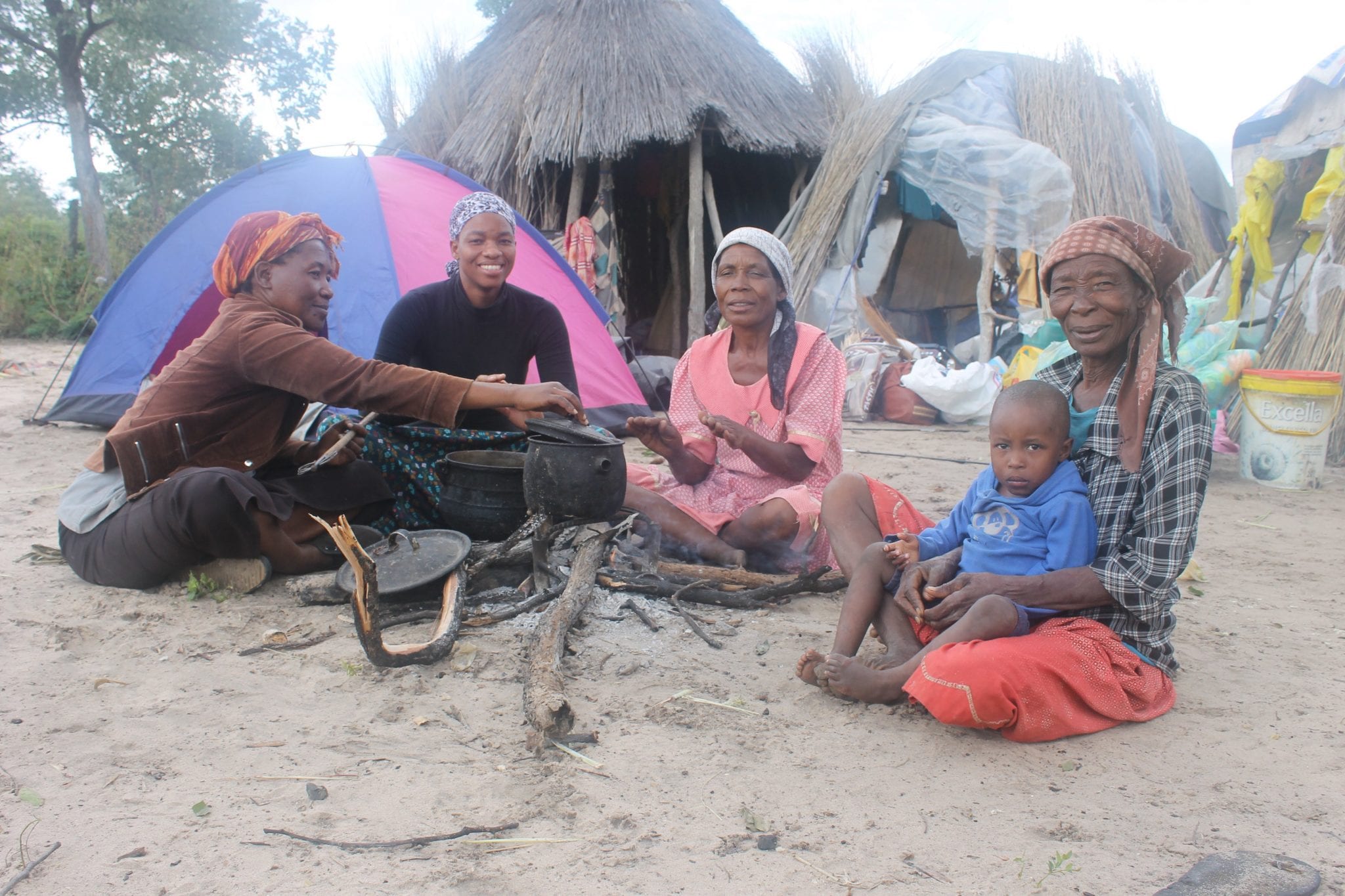The //Anikhwe are the only San Khoi group in southern Africa living closely connected to a riverine environment, just as the words ‘//Ani’ (meaning ‘river’) and ‘khwe’ (meaning ‘people’) suggest. This is why their traditional territories and cultural landscapes fall within the core zone of the Okavango Delta World Heritage site. Most of the islands found around the panhandle area of the delta are the ancient burial grounds fort their rainmakers, and are thus regarded as highly sacred.
Menemene /A’niku (right) and Tobo Zingoro (second right) are the descendants of the //Anikhwe leader and rainmaker N’ukhwa Kgebe, who lived with his people in the Okavango Delta and died around 1890. With the advent of the Bantu-speaking tribes in the region, and the ensuing inter-marriages and assimilation, the //Anikhwe tradition of rainmaking ended with the passing on of the last rainmaker, Kachire (the brother of Menemene and Tobo) in the mid 90s. The powers of rainmaking were passed on from uncle to nephew only, hence only the men could receive them.
The same goes for the passing on of the //Anikhwe language, which is also in rapid decline along with cultural expressions such as dance. It is therefor the wish of the //Anikhwe youth in Ngarange, Botswana, to document their peoples’ history in the form of documentary videography and on paper, including local knowledge related to fishing, medicinal plants and the preparation of food. All this to ensure the survival of the rich and ancient //Anikhwe culture for future generations.
Fun fact. You might be wondering why we’ve added the symbols in front of ‘Anikhwe’, this is because in written language the // refers back to the typical San clicking sound, which in this case would sound like ‘Xlanihkwe’.

